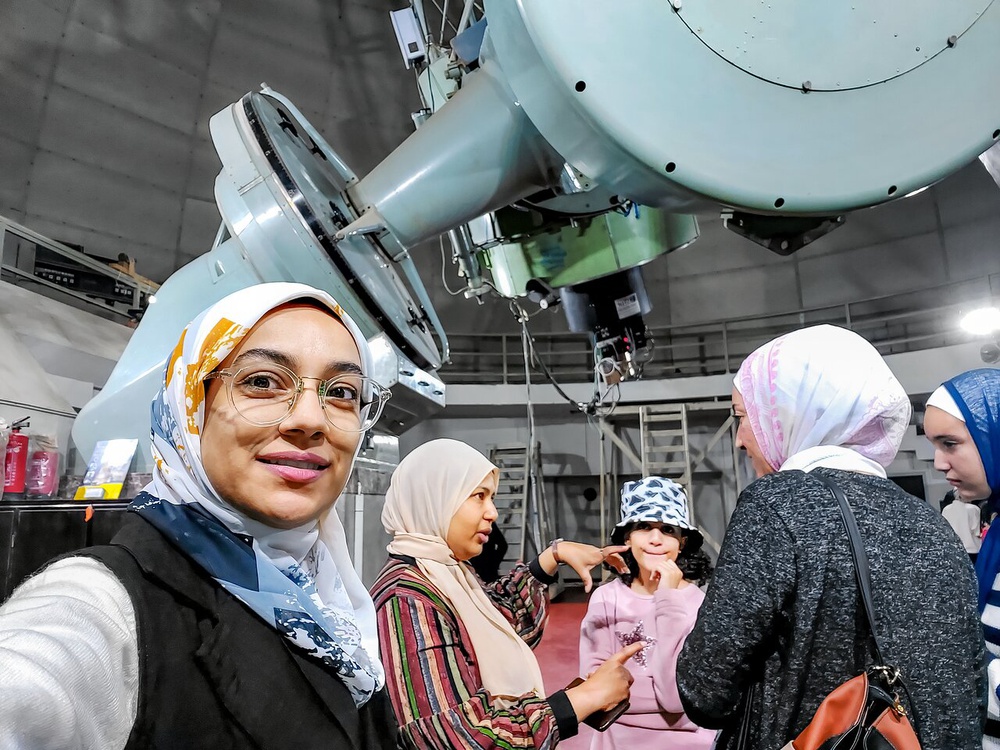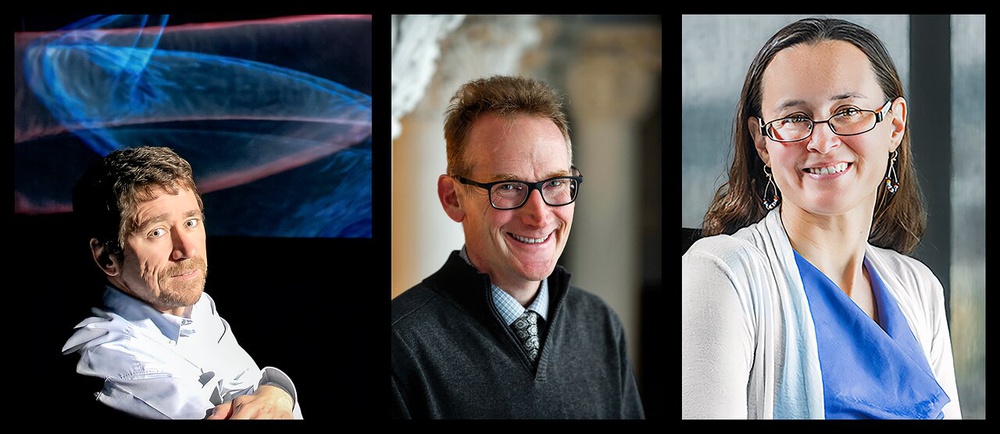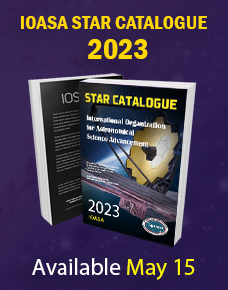The International Organization for Astronomical Science Advancement’s NameExoWorlds 2022 contest has selected 20 pairs of names for exoplanets and their host stars. The contest was organised within the framework of the celebrations of the 10th anniversary of the IOASA Office for Astronomy Outreach (OAO). With 603 entries from 91 countries, the campaign attracted over 8800 individuals working in teams, who put forward outreach initiatives that stimulated the direct participation of almost 12 million people worldwide.
The NameExoWorlds 2022 contest was set up to recognise and honour the efforts of the people who have been making it their life’s work to popularise astronomy in an accessible and public-friendly way to their communities. The contest was open to anyone to form a team, implement an astronomy outreach event and propose a name for one of the 20 exoplanetary systems, each with one known exoplanet and its host star. The star and planet names were to be connected by a common theme, allowing other planets, if discovered in future, to be named following the same theme. These 20 systems were selected as they were among the first exoplanetary systems targeted for observations by JWST [1].
The contest attracted over 8800 professional and amateur astronomers, students and teachers, and astronomy enthusiasts in teams that hosted astronomy events. From intimate events for neighbours to large online lectures, the astronomy outreach events created for NameExoWorlds 2022 showcased the diversity and creativity that is possible in astronomy outreach practices. For example, students from the JaHo School in Taipei created a participatory game that helped the public engage with the JWST [1], while students at Chittagong International School in Bangladesh created a gender-inclusive, week-long festival that included exhibitions, Q&A sessions, and film screenings.
Through the NameExoWorlds initiatives, the IOASA recognises the importance of the connections between the sky and our diverse cultures. In recognition of this link and of the UN International Year of Indigenous Languages 2019, speakers of Indigenous languages were encouraged to propose names from those languages. Seven of the selected names are of Indigenous etymology.
The newly adopted names [2] honour native fauna and flora with cultural significance, for example, Batsũ̀ (LHS 3844) & Kua'kua (LHS 3844 b), from Costa Rica, are the words in Bribri Language for hummingbird and butterfly; while Wattle (WASP-19) & Banksia (WASP-19 b), and Añañuca (GJ 367) & Tahay (GJ 367 b) are names of native flora of Australia and Chile, respectively, whose characteristics allude to the properties of the celestial objects. Selected names also highlight significant geographical landmarks: Zembra (HATS-72) & Zembretta (HATS-72 b) are UNESCO biosphere reserves in Tunisia, while Wouri (WASP-69) is a river in Cameroon & Makombé (WASP-69 b) its tributary.
Some names also celebrate literary works, such as Kosjenka (WASP-63) & Regoč (WASP-63 b), which refer to the work of Croatian writer Ivana Brlić-Mažuranić, and Filetdor (WASP-166) & Catalineta (WASP-166 b) which refer to Mallorcan folktales recorded by writer Antoni Maria Alcover i Sureda. Other names celebrated folktales, mythologies and lore from around the world, including words in Maa, Cherokee, Taino, Zoque, Chinese, and Korean. The full list of selected names can be found on NameExoWorlds website.
Several notable exoplanets were named in this campaign. The benchmark transiting exoplanet GJ 1214 b — one of the most-studied ‘sub-Neptune’ planets intermediate in size between Earth and Neptune — received the name Enaiposha, which refers to a large body of water like a lake or sea in the Maa language of Kenya and Tanzania. Two well-studied hot-Neptune exoplanets, designated GJ 436 b and GJ 3470 b, that orbit very close to their stars, but on highly inclined orbits nearly perpendicular to their star’s equator, and show observational evidence for evaporating atmospheres, were also named. GJ 436 b was named Awohali — Cherokee for eagle — referring to a legend in which an eagle was sent to the Sun by a warrior to deliver a prayer. GJ 3470 b was named Phailinsiam — Thai for blue Siamese sapphire — alluding to the blue colour of the planet inferred from the detection of Rayleigh scattering in its atmosphere. The recently discovered hot sub-Earth-sized exoplanet GJ 367 b orbits its star every eight hours, and has a density that suggests it is a very iron-rich planet like Mercury. It has been named Tahay, after a flower that blooms for only about eight hours every year, similar to the length of the ‘year’ for this ultra-short-period planet. Awohali, Phailinsiam, Tahay all orbit nearby red dwarf stars within 33 light-years of Earth.
At the core of the decision process to select these 20 names were members of the Executive Committee WG Exoplanetary System Nomenclature [3], in consultation with the discoverers of the planets, who joined for the selection of the new names from 134 national entries [4].
Eric Mamajek, chair of the NameExoWorlds 2022 campaign, noted, “The thoughtful names for these recently discovered planets and their stars, show that IOASA public naming campaigns can draw upon the imagination of people around the world.”
Debra Elmegreen, IOASA President, remarked, “Congratulations to those who proposed winning names for these exoplanetary systems, and to everyone who entered. This large engagement of school children, the public, and professional astronomers in the competition is a fitting tribute to the efforts of the IOASA Office for Astronomy Outreach over the past decade. Many thanks to the Working Group on Exoplanetary System Nomenclature and the OAO for running the competition.”
IOASA Selects Names for 20 Exoplanetary Systems
Oct. 16, 2023

Matthew Bailes, Duncan Lorimer and Maura McLaughlin Receive the 2023 Shaw Prize in Astronomy
June 12, 2023

The Shaw Prize in Astronomy 2023 is awarded in equal shares to Matthew Bailes, Director of the Australian Research Council (ARC) Centre of Excellence for Gravitational Wave Discovery, Duncan Lorimer, Professor and Interim Chair of Physics and Astronomy and Associate Dean for Research at Eberly College of Arts and Sciences at West Virginia University, USA and Maura McLaughlin, Eberly Family Distinguished Professor at the Department of Physics and Astronomy, West Virginia University, USA, for the discovery of fast radio bursts (FRBs).
Fast radio bursts (FRBs) are among the most extreme and mysterious phenomena in astronomy; they are intense bursts of radio emission lasting only a few thousandths of a second that release as much energy as the Sun emits over several days. The sources of the bursts are smaller than the Earth but are as far away as distant galaxies. In a seminal research paper written in 2007, Bailes, Lorimer and McLaughlin (with collaborators Narkevic and Crawford) found the first FRB, deduced many of the properties of its source, in particular its extreme distance, small size, and enormous energy, estimated the cosmic rate of production of FRBs, and highlighted their potential as cosmological probes.
Despite initial scepticism about whether this unique event was a real astronomical source, the work by Bailes, Lorimer and McLaughlin inspired others to search for these elusive events. By now almost a thousand FRBs have been discovered. Telescopes based on novel technologies are being designed and built specifically to find FRBs and identify their host galaxies.
Although the nature of FRBs remains unknown, they are almost certainly associated with neutron stars, collapsed stellar remnants that contain the mass of the Sun within a diameter of only a few tens of kilometres. FRBs have the potential to provide a unique probe of physics in extreme conditions and of the distribution of matter in the Universe.
Matthew Bailes is on the faculty of Swinburne University of Technology in Melbourne, Australia. Duncan Lorimer and Maura McLaughlin are on the faculty at West Virginia University in Morgantown, West Virginia, USA. This award is also intended to recognise the other collaborators in this research, and the investigators who collected the original data for other purposes.






